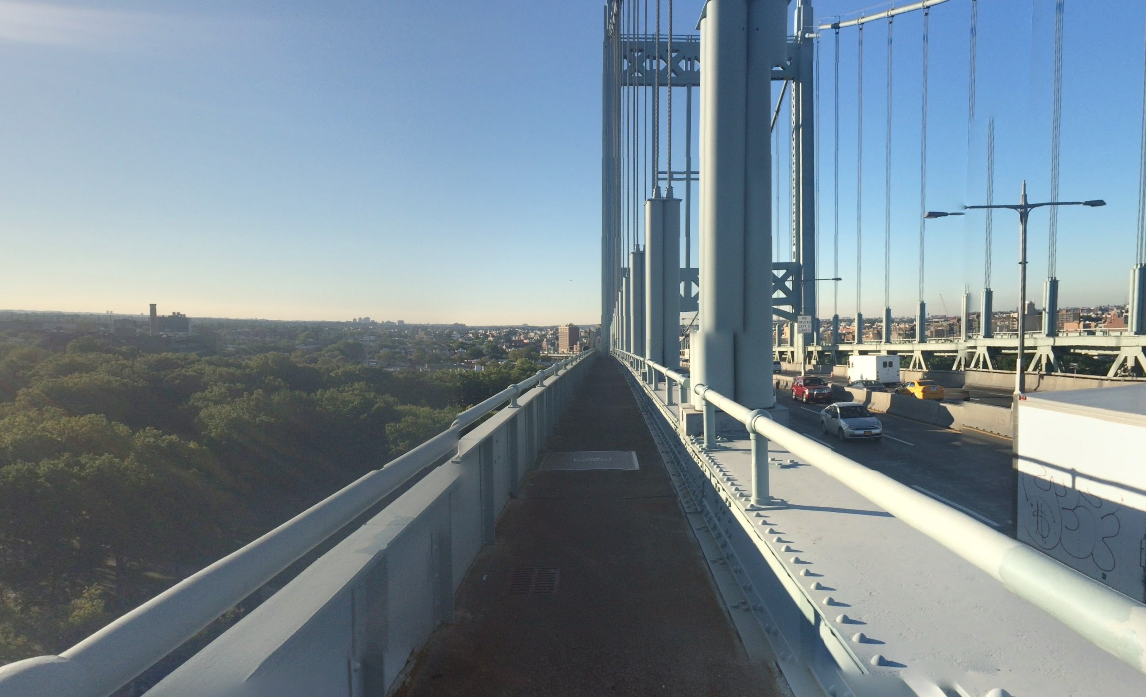If the MTA wants people to stay off the trains, it's time for the agency to welcome cyclists onto its bridges.
A growing chorus of activists and everyday cyclists is urging the transit agency to discontinue its controversial ban on bike riding over bridges operated by its Triborough Bridge and Tunnel Authority division, including the crucial Triborough and Cross Bay, the Marine Parkway-Gil Hodges and the Henry Hudson spans.
"We asked for a four-to-six month pilot on the Triborough, and they wouldn't even entertain that," said Jon Orcutt of Bike New York, and a former Bloomberg administration official. "These guys are barely in the 20th century when it comes to cycling and pedestrians."
Orcutt and others see the coronavirus as a crisitunity to make New York more resilient and sustainable during the current crisis and for the future.
"They should do it now for this crisis and also as a matter of policy, because it's a matter of the climate adaption policy we need right now," he said.
Transportation Alternatives is also urging the MTA to lift the cycling ban on the Triborough, plus make the bridge's narrow bike path safer with fencing. And other activists are reminding city officials that they could do more on the Queensboro Bridge, where cyclists and pedestrians are crammed into a single increasingly crowded lane.
The activists' response comes after MTA Chairman and CEO Pat Foye on Monday begged New Yorkers to try to get around "without riding the subway," to relieve pressure on the system. It's the same advice that both Gov. Cuomo and Mayor de Blasio gave the public, with de Blasio going as far as actually encouraging people to bike to work.
But Foye could make it easier for cyclists with a snap of his fingers. Yet he is reluctant.
At the same press conference on Monday, Foye said the agency hasn't considered ending the ban, even temporarily. But, he added, "We'll certainly consider it."
It's unlikely he will, given that this is certainly not the first time advocates for cycling have demanded access to critical infrastructure such as the Triborough — which links Astoria to Upper Manhattan and the South Bronx. Last September, State Senator Mike Gianaris and Council Member Costa Constantinides demanded that the MTA open the bridge's southern roadway to cyclists.
"The MTA must end the unfair practice of banning cycling from the Triborough Bridge," said Constantinides, a leading contender in the special election for Queens Borough President on March 24.
This week, Gianaris continued to say that the MTA should figure out a way to let cyclists take advantage of the non-motor vehicle paths on its bridges.
"I fully support the MTA accommodating bikes and pedestrians on bridges under its control where safety can be ensured," said the Senate Deputy Leader.
The MTA has claimed in the past that the tight quarters of the bike/pedestrian paths on its bridges poses some kind of safety risk. But cyclists don't see it that way — the bridges are currently rarely used, but have massive potential.
Lifting the cycling ban "absolutely would be helpful," for commuters going to and from Rockaway, said Rockaway Park resident Jim Burke. "It would also take pressure off crowds on Q35, Q52 and Q53. It's idiotic to have the state police always there, it makes people uncomfortable to ride and risk a ticket."
After initial publication of this story, MTA spokesman Aaron Donovan issued this statement:
Walkways over the RFK, Henry Hudson, and Rockaway bridges, or their entrances, are simply not wide enough to support bicycling under Federal standards, which are put in place for safety of all pathway users. The MTA currently isn’t in a position to allow bicycling on non-compliant infrastructure, however we will continue to explore ways for increasing bicycling and pedestrian access.
The agency did not immediately respond to a follow-up about whether it will choose to not enforce the anti-biking rule during the crisis.





